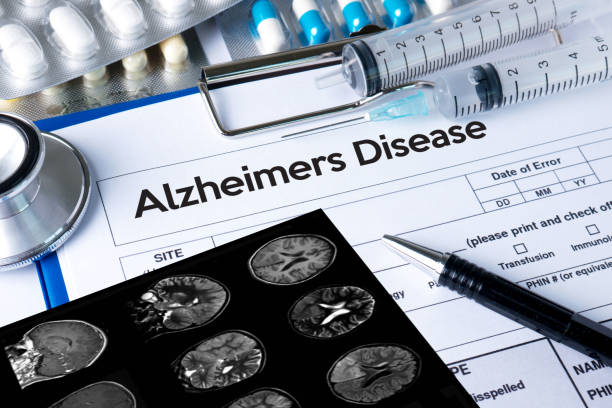Fitness calculator can reveal a lot about your health
A Fitness Calculator was developed by researchers from the Norwegian University of Science and Technology (NTNU) in 2013. It was able to reveal your body’s real age and how long you could expect to live. Now it turns out that it can tell you much more about your health.
“Your fitness level is one of the things that tells you the most about your current and future health. The calculator developed at NTNU gives accurate fitness estimates for most people. So it’s not surprising that the calculator also lends itself to revealing risk for numerous diseases,” says Professor Ulrik Wisløff, who heads CERG (Cardiac Exercise Research Group) at NTNU.
During the past year, CERG published six scientific articles on the Fitness Calculator. The calculator, it turns out, is able to alert users to quite a long list of diseases you may be at risk for.
“Heart attack, atrial fibrillation, dementia, reduced brain volume, depression and fatty liver disease – our calculator can tell you if you are at increased risk for all these conditions,” says Wisløff.
So how do you find out if you’re in good enough shape to avoid these prognoses?
We’ll come back to that, but first we should explain how and why the Fitness Calculator works.
Between 2006 and 2008, the fitness project that was part of the third wave of the Nord-Trøndelag Health Study (HUNT3) included several thousand participants. In addition to doing all the other HUNT measurements and questions, they were able to measure their maximum oxygen uptake with a treadmill exercise test.
“A person’s maximum oxygen uptake is the very best measure of fitness that we have,” says Wisløff.
“The test results show how many millilitres of oxygen the body can absorb and utilize for muscle work for one minute at maximum effort. This fitness score tells you how well the heart is pumping oxygen-rich blood into the body, how effectively the blood vessels are transporting this blood to the muscles, and the ability of the muscles to utilize the oxygen to produce energy,” he says.
If you are in extremely poor shape, you might score a fitness number below 20. By contrast, the best cross-country skiers in the world have a fitness score around 90.
Healthy men and women of all ages, with very different fitness levels, participated in the HUNT3 Fitness Project.
“That’s how we were able to find out what the most important factors were in calculating the fitness level of healthy individuals. These factors – age, body mass index, leisure-time physical activity, and resting heart rate – are the ones we’ve included in the Fitness Calculator algorithm,” says Wisløff.
Using the Fitness Calculator, the CERG researchers showed that the fitness number you get is of great importance in predicting life expectancy.
The better shape you’re in, the lower your risk of premature death.
Since these results were published, both the Norwegian Directorate of Health and the American Heart Association have recommended that physicians use the Fitness Calculator to identify patients who have particularly high health risks.
“The calculator serves as a very simple and useful tool for preventing lifestyle diseases,” says Wisløff.
Every day, hundreds of people visit CERG’s websites to test their fitness level. The calculator is approaching eight million completed fitness tests so far.
“When The New York Times wrote about the results, so many people wanted to try the calculator that NTNU’s websites couldn’t handle the large amount of traffic. People from all over the world who want to calculate their own fitness age are still flocking to the site,” Wisløff says.
And there may be good reasons to check your fitness level.
In 2019, six new research articles were published based on the Fitness Calculator. They suggest that fitness below a certain level is a critical risk factor for many diseases.
The risk of dying from cardiovascular disease decreases by just over 20 per cent for every fitness number increase of 3.5. Also, the risk of dying earlier than expected for whatever reason is lower the better you score on the calculator.
One-third of the least fit middle-aged and older women have a 25 per cent higher risk of heart attack than those with the best fitness level for their age. For men, the risk difference is 10 per cent between the most and least fit.
Women and men with better than average stamina for their age group have a 30 to 40 per cent lower risk of developing heart disease than men in the poorest shape.
Older men and women who remain fit for a full decade have larger brains than those who have consistently poor fitness levels over the same period. Larger brain volume is key for healthy ageing and memory.
If you are among the least fit 20 per cent, you are also at increased risk of becoming depressed. The danger is about 20 per cent higher than for those in better shape.
A very high proportion of people with poor fitness levels have non-alcoholic fatty liver disease. Moreover, individuals with fatty liver disease have a 50 per cent higher risk of dying in the next decade if they are in the lowest-scoring 20 per cent as measured on the Fitness Calculator.
“All these research articles are based on data from HUNT. A total of 240000 people have participated in the four HUNT surveys since the mid-1980s. We’ve calculated the fitness of the participants using the Fitness Calculator one or more times. This has enabled us to see how poor fitness is linked to increased health risks many years later,” says Wisløff.
The results may not be very encouraging if you’ve now tried out the Fitness Calculator and your results are a low fitness number and a high fitness age.
However, it’s not too late to do something to lower your risk of disease.
Several of the studies have also looked at how the development of fitness over time is related to the development of lifestyle diseases.
People who improve their fitness level over a ten-year period almost halve their risk of developing atrial fibrillation compared to those who do not improve their fitness in the same period.
Individuals in poor shape for an extended period of time have about twice the risk of developing dementia compared to those who maintain good fitness levels. But if you manage to improve your fitness level, the risk drops by 16 per cent for every 3.5 increase in fitness number.
Middle-aged people who manage to improve their condition from below-average to above-average also generally have a higher brain volume than individuals who stay at low fitness levels over time.
“So it’s important to exercise in a way that actually improves our conditioning. Both our research and that of others show that high-intensity exercise is far more effective for our fitness than more moderate exercise. ‘High intensity’ means you get really sweaty and out of breath,” says Wisløff.
To help individuals know if they are exercising enough to improve their fitness and health, Wisløff’s research group has developed the PAI – Personal Activity Intelligence tool.
“PAI is a simple scoring system based on your personal profile. PAI rewards all training that increases your heart rate, and you earn PAI points faster the more intensely you train. If you are physically active enough to reach 100 PAI or more each week, our research shows that you are doing enough to achieve at least average fitness for your age. With 100 PAI a week, you also have a lower risk of lifestyle diseases and premature death,” says Wisløff.
All you need to measure PAI is a smartphone and a smart watch or fitness tracker that measures your heart rate. You can read more about how PAI works here.
Source: The Norwegian University of Science and Technology (NTNU)
Full bibliographic information
Temporal changes in cardiorespiratory fitness and risk of dementia incidence and mortality: a population-based prospective cohort study
The Lancet Public Health. VOLUME 4, ISSUE 11, PE565-E574, NOVEMBER 01, 2019





